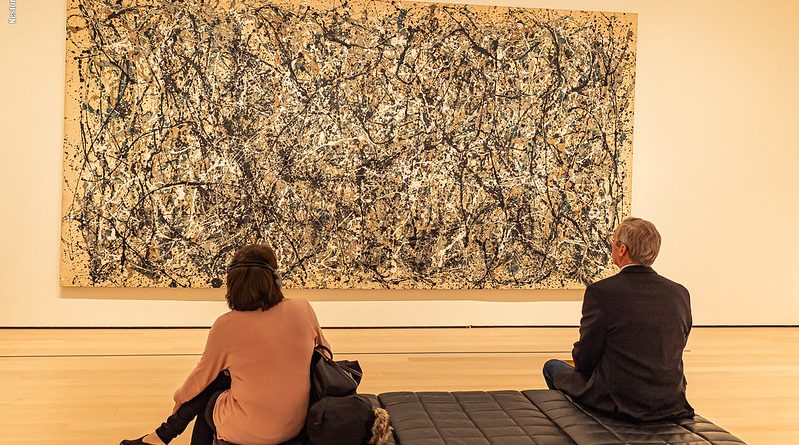Great Artists – Jackson Pollock
Jackson Pollack was born Paul Jackson Pollock in 1912, in Cody, Wyoming, the youngest of five sons. His father was a travelling surveyor and moved around on government jobs which took Pollock around the western United States. For a while he lived in Echo Park in Los Angeles.
Pollock, known as Jack the Dripper by Time magazine, because of his famous drip paintings, was a pioneer of abstract expressionism.
Pollock was introduced to the use of liquid paint in 1936 at an experimental workshop in New York City by the Mexican muralist David Alfaro Siqueiros. He later used paint pouring as one of several techniques on canvases of the early 1940s, such as Male and Female and Composition with Pouring I. After his move to Springs, he began painting with his canvases laid out on the studio floor, and he developed what was later called his “drip” technique.
He started using synthetic resin-based paints called alkyd enamels, which, at that time, was a novel medium. Pollock described this use of household paints, instead of artist’s paints, as “a natural growth out of a need”. He used hardened brushes, sticks, and even basting syringes as paint applicators. Pollock’s technique of pouring and dripping paint is thought to be one of the origins of the term action painting. With this technique, Pollock was able to achieve a more immediate means of creating art, the paint now literally flowing from his chosen tool onto the canvas. By defying the convention of painting on an upright surface, he added a new dimension by being able to view and apply paint to his canvases from all directions.
While painting this way, Pollock moved away from figurative representation, and challenged the Western tradition of using easel and brush. He used the force of his whole body to paint, which was expressed on the large canvases. In 1956, Time magazine dubbed Pollock “Jack the Dripper”, due to his painting style.
“My painting does not come from the easel. I prefer to tack the unstretched canvas to the hard wall or the floor. I need the resistance of a hard surface. On the floor I am more at ease. I feel nearer, more part of the painting, since this way I can walk around it, work from the four sides and literally be in the painting.
I continue to get further away from the usual painter’s tools such as .easel, palette, brushes, etc. I prefer sticks, trowels, knives and dripping fluid paint or a heavy impasto with sand, broken glass or other foreign matter added.
When I am in my painting, I’m not aware of what I’m doing. It is only after a sort of ‘get acquainted’ period that I see what I have been about. I have no fear of making changes, destroying the image, etc., because the painting has a life of its own. I try to let it come through. It is only when I lose contact with the painting that the result is a mess. Otherwise there is pure harmony, an easy give and take, and the painting comes out well.”
Pollock had a volatile temperament and battled with alcohol. He died in 1956 aged just 44, in an alcohol related motor accident on Long Island, New York, just a mile from his home.




